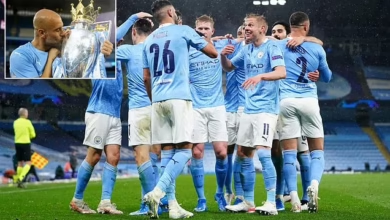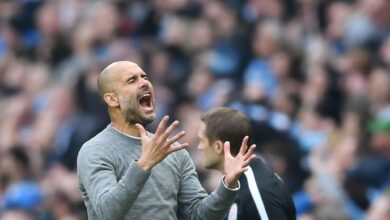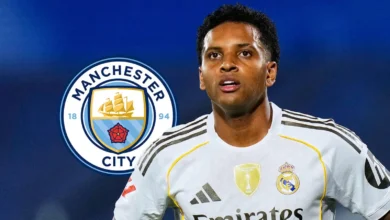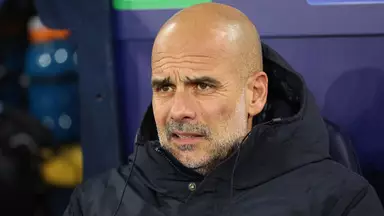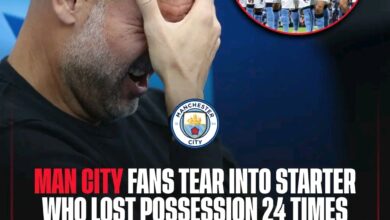Liverpool’s Strategic Opportunity: A Deep Dive into the Potential Jonathan Rowe Swap Deal
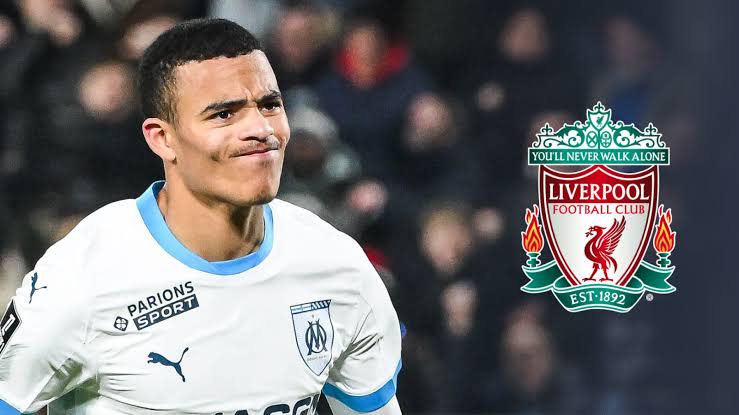
Liverpool Football Club finds itself at an intriguing crossroads in the current transfer window, presenting a unique opportunity that could reshape their squad dynamics while addressing both surplus and shortage concerns. The emergence of a potential swap deal involving England Under-21 forward Jonathan Rowe has captured the attention of football analysts and supporters alike, representing what could be one of the most astute pieces of business in recent memory.
The Reds currently face an unusual predicament in their defensive setup – an overabundance of talent in the left-back position that, while reflecting the club’s recruitment success, has created a selection headache that demands resolution. This situation has evolved following the high-profile acquisition of Milos Kerkez from Bournemouth earlier in the summer transfer window, a deal that reportedly cost Liverpool approximately £45 million and fundamentally altered the competitive landscape for the position.
Andrew Robertson, the Scottish international who has become synonymous with Liverpool’s recent success, remains a central figure in this narrative. Since his arrival from Hull City in 2017, Robertson has established himself as one of the Premier League’s premier left-backs, contributing significantly to Liverpool’s Champions League triumph in 2019 and their Premier League title victory in 2020. His attacking prowess, defensive solidity, and leadership qualities have made him an indispensable component of Liverpool’s tactical framework under Jürgen Klopp and now Arne Slot.
However, at 31 years of age, Robertson finds himself at a career crossroads where the natural progression of football careers intersects with Liverpool’s long-term planning. The arrival of Kerkez, a 21-year-old Hungarian international with enormous potential and a decade-long career ahead of him, signals Liverpool’s intention to gradually transition from Robertson’s era while maintaining their competitive edge. This strategic foresight reflects the club’s commitment to sustainable success and their recognition that even the most successful players eventually require successors.
The third piece of this left-back puzzle is Konstantinos Tsimikas, the Greek international who joined Liverpool from Olympiacos in 2020. At 29 years old, Tsimikas occupies an awkward middle ground in this triumvirate. While he has proven himself capable when called upon, particularly during Robertson’s injury absences, the presence of both Robertson and Kerkez has significantly limited his opportunities for regular first-team football. This situation has understandably led to speculation about his future at Anfield, with various reports suggesting that the club would be willing to entertain offers for his services.
The interest in Tsimikas from various quarters reflects his proven ability and the ongoing demand for quality left-backs in European football. Premier League clubs including Nottingham Forest and Fulham have been linked with moves for the Greek international, recognizing his Premier League experience and proven ability to perform at the highest level. These domestic interests provide Liverpool with potential options for resolving their left-back surplus while potentially generating transfer revenue that could be reinvested in other areas of the squad.
More intriguingly, Tsimikas’s former club Olympiacos has maintained interest in securing his return to Greece, a move that could appeal to the player on both personal and professional levels. Such a transfer would offer Tsimikas the opportunity to return to familiar surroundings where he previously excelled, while potentially providing Olympiacos with a significant upgrade in their left-back position. The emotional and practical appeal of such a move cannot be understated, particularly given Tsimikas’s previous success in Greek football and his understanding of the league’s requirements.
However, it is the interest from Marseille in France’s Ligue 1 that has created the most intriguing possibilities for Liverpool’s transfer strategy. According to reports from Foot Mercato, the French club’s interest in Tsimikas has opened up potential avenues for more creative deal-making that could benefit both clubs while addressing their respective needs.
Olympique de Marseille’s current situation provides crucial context for understanding why this potential swap deal has emerged as a viable option. Under the guidance of Roberto De Zerbi, the Italian tactician renowned for his innovative approach and attacking philosophy, Marseille finished as runners-up to Paris Saint-Germain in Ligue 1 last season. This achievement raised expectations for the current campaign, with supporters and management alike hoping to close the gap on their Parisian rivals while making meaningful progress in European competitions.
However, Marseille’s season began in disastrous fashion with a defeat to Rennes on the opening day of the new Ligue 1 season. While single-match results rarely define entire campaigns, this particular defeat had ramifications that extended far beyond the ninety minutes of football. The aftermath of the match saw a significant breakdown in team harmony, with reports emerging of a physical altercation between Adrien Rabiot and Jonathan Rowe in the dressing room following the disappointing result.
This incident has had profound consequences for both players involved, with De Zerbi making the decisive choice to transfer-list both individuals while publicly stating that neither would represent the club again under his management. Such dramatic action reflects the Italian coach’s uncompromising standards and his willingness to prioritize team harmony and professional conduct over individual talent, regardless of the players’ potential contributions on the pitch.
For Jonathan Rowe specifically, this development represents a dramatic fall from grace following what appeared to be a promising start to his continental career. The 22-year-old English forward had joined Marseille from Norwich City in the previous summer transfer window for a fee reported to be around €15 million, representing a significant investment in his potential and a major step forward in his professional development.
Understanding Jonathan Rowe’s profile and potential is crucial for evaluating whether Liverpool should pursue this opportunity. The young forward’s journey to this point reflects both the challenges and opportunities inherent in modern football’s increasingly globalized transfer market.
Rowe’s most recent achievement on the international stage provides compelling evidence of his quality and potential. During the summer of 2024, he played an integral role in England’s UEFA European Under-21 Championship triumph, representing his country alongside current Liverpool players Harvey Elliott, Jarell Quansah, and Tyler Morton. This success demonstrates his ability to perform at the highest levels of age-group football while working effectively within a team context that included several of his potential future teammates.
His technical profile suggests a player well-suited to Liverpool’s tactical requirements and playing philosophy. Rowe typically operates from the left wing, a position where he can utilize his pace, dribbling ability, and eye for goal to maximum effect. However, his versatility represents one of his most valuable attributes, as he has demonstrated the capability to perform effectively in central attacking roles as well as on the right wing when tactical situations demand such flexibility.
This positional versatility would be particularly valuable for Liverpool given their current squad composition and tactical approach under Arne Slot. The Dutch manager has shown a preference for fluid attacking movements and positional interchanges that require forwards capable of operating in multiple roles within the same match. Rowe’s ability to contribute from various attacking positions would provide Slot with additional tactical options while offering squad rotation possibilities across multiple positions.
From a technical perspective, Rowe possesses several attributes that align with Liverpool’s attacking philosophy. His dribbling ability allows him to beat defenders in one-on-one situations, creating space for himself and teammates while adding an element of unpredictability to Liverpool’s attacking patterns. His willingness to attempt spectacular efforts and his composure in front of goal suggest a player unafraid of the big moments, qualities that would be essential for success at a club of Liverpool’s stature.
To fully appreciate the potential value of acquiring Jonathan Rowe, it is essential to examine Liverpool’s current squad composition and the gaps that his arrival could address. The departure of several key attacking players during the summer transfer window has created both opportunities and challenges for squad planning.
The exits of Luis Díaz, Darwin Núñez, and Ben Doak have significantly reduced Liverpool’s attacking depth, creating space in the squad for new arrivals while potentially exposing the team to injury concerns or loss of form among remaining players. Díaz’s departure, in particular, has removed a player who provided genuine width and pace on the left wing, qualities that were integral to Liverpool’s attacking approach during his time at the club.
Núñez’s exit represents the loss of a different type of attacking threat, with his physical presence and finishing ability in central areas providing tactical options that may be difficult to replace. Meanwhile, Doak’s departure, while perhaps less immediately impactful given his age and development stage, nonetheless reduces the long-term attacking options available to the coaching staff.
These departures have left Liverpool with a reduced pool of attacking options, potentially creating vulnerabilities in squad depth that could prove problematic during periods of fixture congestion or injury crises. The addition of a versatile forward like Rowe would help address these concerns while providing competition for places that could drive improved performances across the attacking unit.
One particularly significant aspect of any potential move for Jonathan Rowe relates to his status as a homegrown player under Premier League and UEFA regulations. This designation carries substantial practical and financial implications that extend beyond simple squad planning considerations.
Under current Premier League rules, clubs are required to maintain specific quotas of homegrown players within their registered squads. These regulations are designed to encourage the development of domestic talent while ensuring that English players continue to receive opportunities at the highest levels of the domestic game. For Liverpool, adding a homegrown player like Rowe would provide valuable flexibility in squad composition while potentially freeing up non-homegrown spots for future transfer targets.
The financial implications of homegrown status extend to UEFA competitions, where similar regulations apply to Champions League and Europa League squads. Liverpool’s ambitions in European competition make compliance with these regulations essential, and the addition of homegrown talent helps ensure that the club maintains maximum flexibility in their European squad selections.
Beyond regulatory compliance, homegrown players often represent more stable long-term investments due to their familiarity with English football culture, reduced adaptation periods, and generally lower risk of integration issues. These factors can contribute to more predictable development trajectories and reduced transfer risk compared to international signings who may require extended adaptation periods.
The timing of this potential opportunity appears particularly favorable for Liverpool from multiple perspectives. Marseille’s urgent need to resolve their squad disruption creates a seller’s market dynamic where Liverpool could potentially negotiate favorable terms while addressing their own squad needs.
The rapid pace at which Marseille appears willing to move Rowe on suggests that Liverpool could avoid extended negotiation periods that might allow competing clubs to enter the bidding. Reports indicate that Bologna has expressed strong interest in the player, creating a sense of urgency that could work in Liverpool’s favor if they choose to act decisively.
From a broader market perspective, the current transfer window has seen inflated valuations across many player categories, making creative deal structures like potential swap arrangements increasingly attractive to clubs operating under financial constraints. The ability to address multiple squad needs through a single transaction while potentially reducing cash outlays represents an appealing proposition in the current economic climate.
The mechanics of any potential swap deal would require careful consideration of several factors, including player valuations, wage structures, and the preferences of all parties involved. Tsimikas’s current market value, his contract situation at Liverpool, and his personal preferences regarding his next career move would all influence the feasibility and structure of any potential arrangement.
Liverpool’s negotiating position appears strengthened by several factors, including Marseille’s apparent urgency to resolve their squad situation and the relatively limited number of clubs currently in a position to provide immediate solutions to their problems. However, successful completion of such a deal would require alignment between the personal preferences of both players and the strategic objectives of both clubs.
The involvement of agents, contract considerations, and potential differences in wage expectations between the French and English markets could create additional complexity that would need to be navigated carefully. Liverpool’s experience in managing complex negotiations and their established relationships within European football could prove valuable in progressing any potential discussions.
While the potential acquisition of Jonathan Rowe presents compelling opportunities, it is essential to acknowledge the risks and challenges associated with such a move. The circumstances surrounding his availability raise questions about his temperament and professionalism that would require careful evaluation through Liverpool’s due diligence processes.
The incident that led to his transfer-listing, while involving another player, nonetheless suggests potential concerns about his ability to maintain professional standards under pressure. Liverpool’s culture and expectations would need to be clearly communicated and accepted before any deal could progress to completion.
From a football perspective, Rowe’s adaptation to Liverpool’s tactical requirements and the pressure of performing at one of the world’s biggest clubs would represent significant challenges. His experience in Ligue 1, while valuable, may not fully prepare him for the intensity and scrutiny associated with Premier League football at Liverpool’s level.
The financial implications of such a deal, including potential future transfer value and contract obligations, would also require careful analysis to ensure alignment with Liverpool’s broader financial strategy and regulatory compliance requirements.
The emergence of this potential swap deal represents the type of creative solution that modern football increasingly demands. Liverpool’s ability to address squad imbalances while potentially acquiring a promising young talent reflects the sophisticated approach to transfer management that has characterized their recent success.
Whether this opportunity develops into a completed transaction will depend on numerous factors, including player preferences, negotiation dynamics, and the strategic priorities of both clubs. However, the fundamental logic underlying such a move appears sound: Liverpool addressing squad depth concerns while providing a pathway for surplus players to continue their careers elsewhere.
The coming days and weeks will reveal whether this intriguing possibility develops into concrete action. For Liverpool supporters, it represents hope for continued squad improvement and evidence of the club’s ongoing commitment to competing at the highest levels across multiple competitions. The potential addition of an England international with room for growth, combined with the resolution of the left-back surplus, could prove to be exactly the type of strategic masterstroke that defines successful transfer windows.
In the rapidly evolving landscape of modern football transfers, opportunities like these require decisive action and strategic vision. Liverpool’s track record suggests they possess both qualities in abundance, making this potential development one worth monitoring closely as the transfer window reaches its critical final stages.







